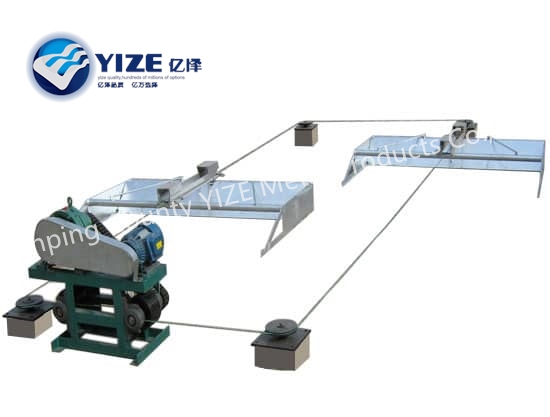floating fish feed pellet mill
Nov . 16, 2024 02:42 Back to list
floating fish feed pellet mill
The Importance of Floating Fish Feed Pellet Mills in Aquaculture
Aquaculture has seen exponential growth over recent years, and with it, the demand for efficient and high-quality fish feed has surged. Central to this is the floating fish feed pellet mill, a crucial piece of equipment that enables fish farmers to produce nutritious and sustainable feed tailored to the needs of different species. This article delves into the significance of floating fish feed pellet mills, their working principles, benefits, and their impact on modern aquaculture.
Understanding Floating Fish Feed
Floating fish feed is specifically designed to stay on the water's surface for an extended period. This characteristic provides several advantages, including allowing fish to feed at their natural water level and promoting better feed utilization. The feed typically contains a balanced mix of proteins, fats, vitamins, and minerals necessary for optimal growth and health. However, producing such specialized feed requires precision and high-quality ingredients, which is where floating fish feed pellet mills come into play.
What is a Floating Fish Feed Pellet Mill?
A floating fish feed pellet mill is a specialized machine that processes raw materials such as fish meal, soybean meal, corn, and other ingredients into pellets. These mills are engineered to produce pellets that not only float but also maintain their integrity in water, minimizing waste and maximizing feed efficiency. The process involves grinding the raw materials into fine powder, mixing them with necessary additives, and then extruding the mixture under high pressure and temperature to create uniform pellets.
Working Principles
The floating fish feed pellet mill operates through a series of steps
1. Raw Material Preparation The first step involves adequately preparing the raw materials. They are cleaned, dried, and ground into a fine powder to ensure even mixing.
2. Mixing Once the materials are prepared, they are thoroughly mixed in a predefined ratio to create a balanced feed formulation. The mixing process is crucial as it ensures that all the nutrients are evenly distributed throughout the feed.
3. Pelleting The mixed material is then fed into the pellet mill, where it is subjected to high pressure and temperature. This process gelatinizes the starch in the feed, allowing it to maintain its shape and float on water.
floating fish feed pellet mill

4. Cooling and Drying After pelleting, the pellets are typically hot and moist. They need to be cooled and dried to ensure a long shelf life and to prevent spoilage during storage.
5. Packaging Finally, the finished floating fish feed pellets are packaged and ready for distribution.
Benefits of Floating Fish Feed Pellet Mills
1. Customized Nutrition One of the most significant advantages of using a floating fish feed pellet mill is the ability to customize feed formulations for different species and growth stages of fish. This ensures that fish receive the specific nutrients they need for optimal health and growth.
2. Sustainability Floating feed has a lower environmental impact. Because these pellets float, fish can consume more feed while reducing waste, leading to a more sustainable aquaculture practice. The efficient use of feed also means less pressure on fish meal stocks, promoting the use of alternative and renewable ingredients.
3. Improved Growth Rates With better feed conversion ratios, fish that are fed with high-quality floating pellets can achieve better growth rates. This not only benefits fish farmers in terms of yields but also leads to healthier fish.
4. Cost-Effectiveness While the initial investment in a floating fish feed pellet mill may be considerable, the long-term savings from reduced feed waste, customized feed options, and enhanced growth rates can lead to significant cost benefits.
The Future of Floating Fish Feed Pellet Mills
As the global demand for fish continues to rise, the importance of efficient, high-quality feed production will only grow. Innovations in technology and feed formulation will help floating fish feed pellet mills evolve, producing even more efficient and nutritious feed. As aquaculture positions itself as a primary source of fish for global populations, the role of these mills in ensuring food security cannot be overstated.
In conclusion, floating fish feed pellet mills are essential for sustainable aquaculture practices. Their ability to produce high-quality, customized feed that enhances growth and minimizes waste makes them an invaluable asset to fish farmers around the world. As we look to the future, the continued development and adoption of these mills will play a critical role in the ongoing success of the aquaculture industry.
-
Hot Sale 24 & 18 Door Rabbit Cages - Premium Breeding Solutions
NewsJul.25,2025
-
Automatic Feeding Line System Pan Feeder Nipple Drinker - Anping County Yize Metal Products Co., Ltd.
NewsJul.21,2025
-
Automatic Feeding Line System Pan Feeder Nipple Drinker - Anping County Yize Metal Products Co., Ltd.
NewsJul.21,2025
-
Automatic Feeding Line System - Anping Yize | Precision & Nipple
NewsJul.21,2025
-
Automatic Feeding Line System - Anping Yize | Precision & Nipple
NewsJul.21,2025
-
Automatic Feeding Line System-Anping County Yize Metal Products Co., Ltd.|Efficient Feed Distribution&Customized Animal Farming Solutions
NewsJul.21,2025






